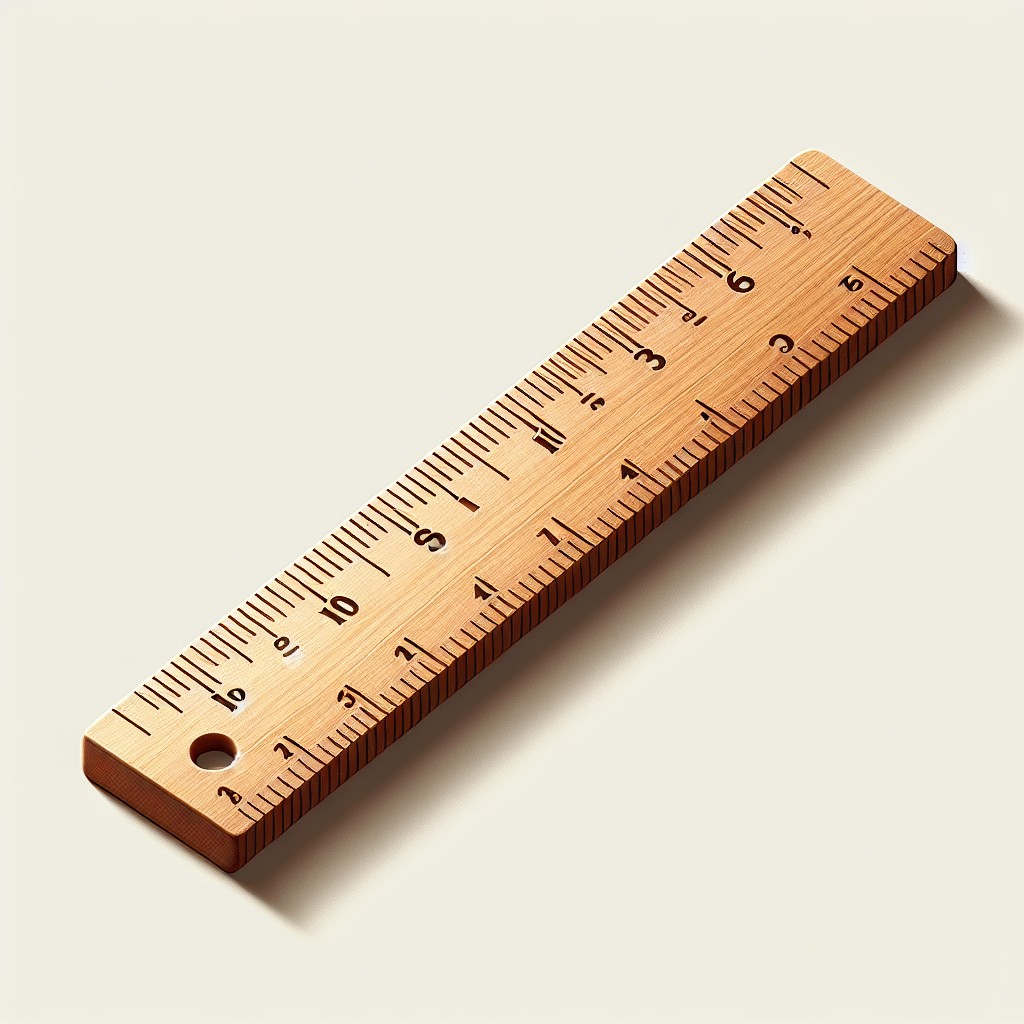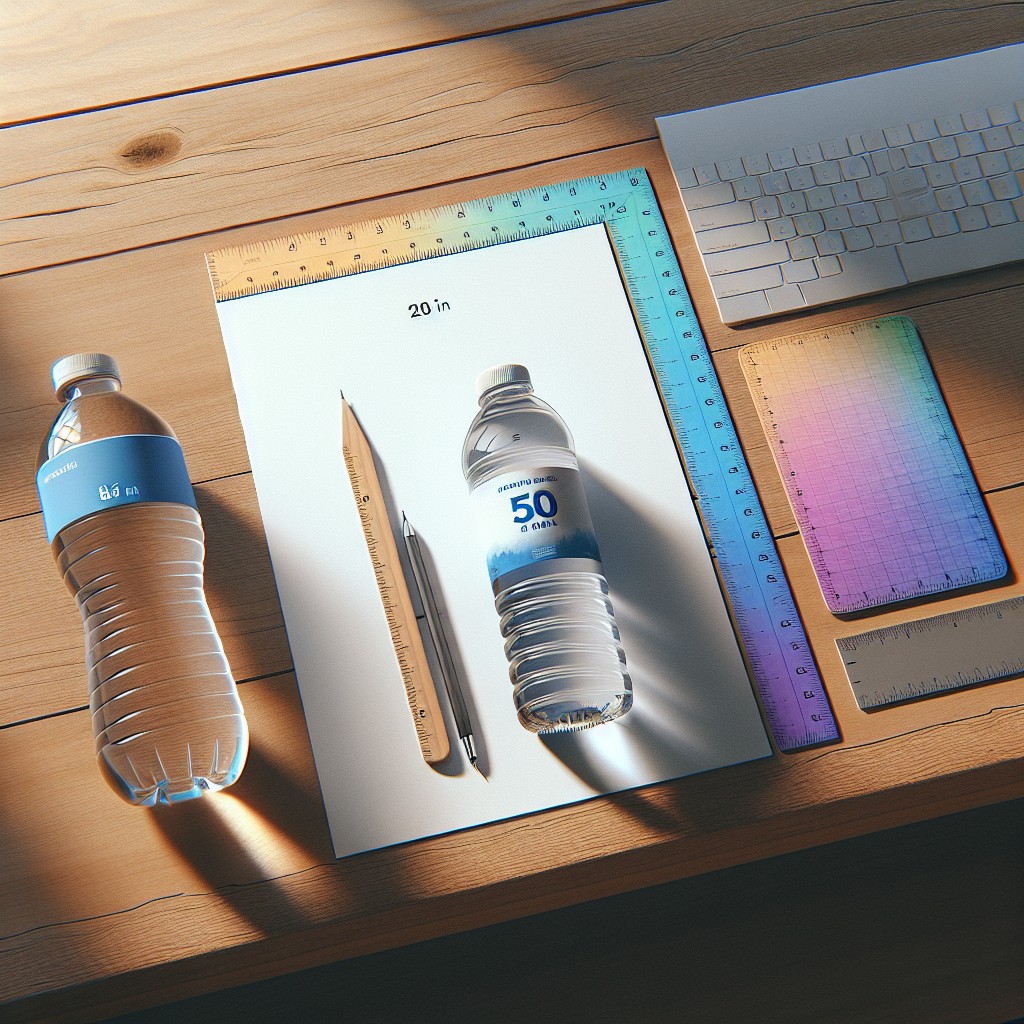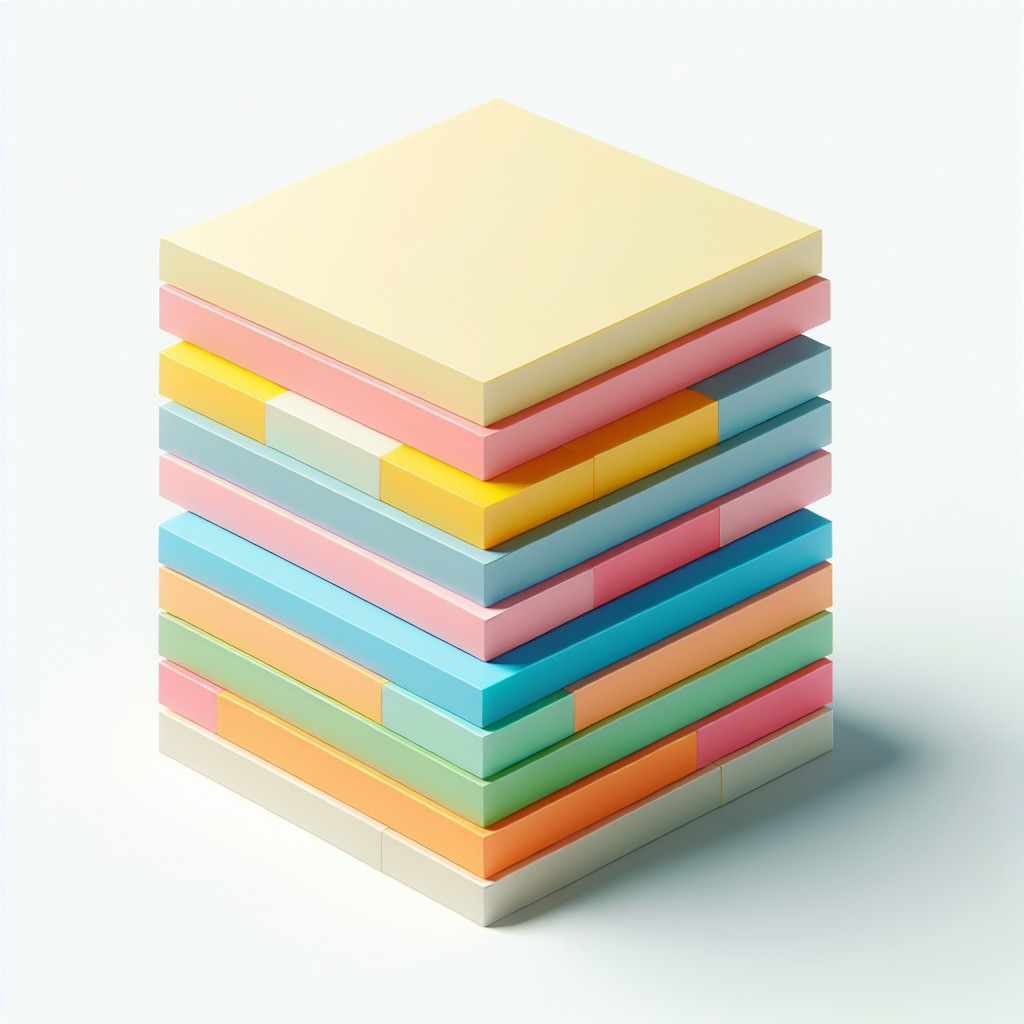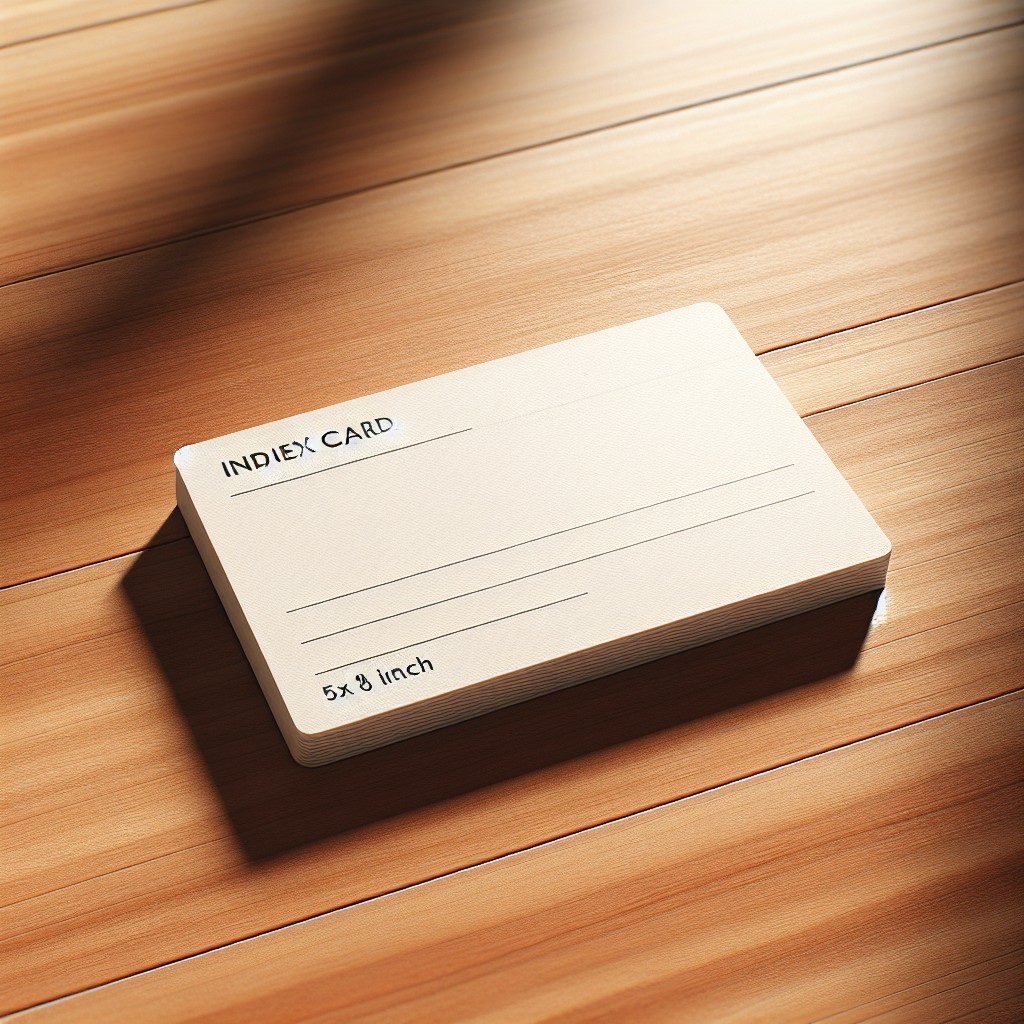Last updated on
Dive into a comprehensive exploration of the true scope of 16 inches, as we unravel its dimensions through everyday objects, vivid comparisons, and insightful demonstrations.
Key takeaways:
- A ruler is the most reliable tool to measure 16 inches.
- Everyday objects such as dollar bills and pens can serve as reference points.
- 16 inches is equivalent to 1 foot and 4 inches or about 44% of a yard.
- Converting metric measurements to inches is as simple as dividing by 2.54.
- A 16-inch pizza typically has 12 to 14 slices and can feed 3 to 5 people.
What's Inside
Using a Ruler or Other Measuring Tool

To accurately measure 16 inches, a ruler is your most reliable option. Here’s how to make it count:
- Place the ruler on a flat surface and align the zero mark with one end of the item you’re measuring.
- Ensure the ruler is straight and level to avoid an inaccurate reading.
- Read the number at the other end of the item; if it’s not a whole number, count the smaller lines for fractions of an inch.
- For items longer than a standard 12-inch ruler, use a measuring tape that extends up to 25 feet or more, keeping it taut for precision.
- Digital calipers can come in handy for smaller items, offering an exact digital reading down to .0005 inches.
Remember that visibility is key; make sure you have enough light to see the measurements clearly and take a few readings to confirm accuracy.
Estimating Inches Using Everyday Items

Visualizing 16 inches doesn’t require special tools. Think about common objects as reference points:
- Dollar bills: Nearly six inches long, so about two and two-thirds of them end to end equal 16 inches.
- Ruler: A standard ruler is 12 inches, so imagine one with an additional third attached.
- Pen or pencil: Most are close to six inches, so picture about two and two-thirds laid end to end.
- Footwear: Men’s size 11 shoe is roughly 11 inches, so envisage a shoe plus about half its length more.
- Keyboard: A typical desktop keyboard is around 17 to 18 inches across, so a smidge less is your target.
Keep in mind that these estimations serve as rough guides for picturing lengths in your daily surroundings and are useful for quick, informal measurements.
Converting Feet, Yards, and Miles to Inches
Understanding the relationship between feet, yards, and miles when converting to inches is crucial for accurate measurement.
One foot comprises 12 inches, so for a 16-inch dimension, you’re looking at roughly 1 foot and 4 inches.
This conversion is handy in numerous situations, especially when working with standard US measurement tools that typically include both feet and inches for convenience.
In a bit larger scale, a yard equals 3 feet or 36 inches.
To picture 16 inches in yards, imagine slightly less than half a yard; it’s about 44% of a yard, to be precise.
This comparison is particularly useful in contexts like fabric measurement or landscaping.
Miles are a leap compared to inches, with one mile equaling 63,360 inches.
Converting 16 inches to miles may seem impractical at first glance, but it’s critical for precise scientific calculations, large-scale mapping, or engineering projects where even small measurements need to be expressed in miles for uniformity.
To sum up, the next time you’re faced with converting feet, yards, or miles to inches, remember:
- 1 foot = 12 inches
- 1 yard = 3 feet or 36 inches
- 1 mile = 5,280 feet or 63,360 inches
Keep these conversions in mind for a quick mental check or for more precise calculations in your projects.
Converting Metric Measurements to Inches
Navigating the world of measurements can be tricky when switching systems. To convert from the metric system, you simply need to know that one inch is equivalent to 2.54 centimeters.
Here’s how you can easily turn centimeters into inches:
- Divide the number of centimeters by 2.54 to get the measurement in inches. For example, 40 cm divided by 2.54 equals approximately 15.75 inches.
- For meters, multiply the length value by 100 to convert it to centimeters first, then apply the division by 2.54. If you have 0.4 meters, that’s 40 cm, and thus about 15.75 inches following the same conversion method.
- To save time, use a conversion app or online calculator for instant results without manual calculations.
With these points in mind, converting any metric measurement into inches can be a breeze. Whether you’re looking to replace machine parts with metric dimensions or create a custom project with exacting standards, these tips will help bridge the metric-imperial divide.
16 Inch 16×9 Display Vs 16 Inch 16×10 Display
Navigating the world of display sizes can be a bit like a high-tech treasure hunt—one where aspect ratios are the map to finding your perfect screen. When dealing with a 16-inch diagonal display, the aspect ratio becomes paramount in understanding the real estate available for your images, videos, and workspaces.
A 16×9 ratio, commonly used in HDTVs and mainstream monitors, provides a wider view. This is ideal for cinematic experiences, as most films are shot with a similar aspect ratio, ensuring you get that edge-to-edge magic without unsightly black bars.
On the other hand, a 16×10 ratio offers more vertical space, which is like a breath of fresh air for productivity. Imagine less scrolling when you’re knee-deep in spreadsheets or coding—more lines are visible at once, and documents have a bit more room to breathe.
Photographers and video editors often favor the 16×9 for its alignment with standard output formats, while those who multitask or deal with long-form content might lean towards 16×10 for the additional verticality.
Visualizing these differences, a 16-inch 16×9 screen is akin to your trusty widescreen cinema, while a 16-inch 16×10 is more like an open book, giving text and graphics a bit more height to stand tall. Each has its domain where it excels, and choosing between them is a matter of matching the screen to your specific viewing habits and needs.
How Many Slices Are In A 16 Inch Pizza?
The number of slices in a 16-inch pizza typically ranges between 12 and 14. This variation stems from different pizzeria preferences or customer requests. Here’s a breakdown:
1. Standard cut: Many pizzerias opt for a 12-slice standard, ensuring each piece is hearty and evenly sized.
2. Party cut: For gatherings, a 14-slice option can be chosen. These are slightly thinner, ideal for allowing guests to sample various flavors without committing to larger portions.
3. Customization: Some establishments or online ordering platforms allow for custom slice numbers, tailoring the pizza to your specific needs.
Remember, the size of each slice impacts the best choice of toppings—too many on a single, thinner slice can lead to a floppy or overloaded experience.
How Many People Does A 16 Pizza Feed?
A 16-inch pizza is typically cut into 10 to 12 slices. When deciding how many can dine on this pie, consider the appetite of your guests. For adults with average appetites, estimate about 3 slices per person. However, in a mixed group that includes children, you might stretch it to serve 4-5 people, as kids often eat less.
Factor in the occasion as well. At a party where there are multiple food options, a 16-inch pizza could satisfy 6-8 people, as they’ll likely sample other dishes. For a pizza-focused event with no other food stars on the table, plan for fewer guests per pie. Always round up if you’re unsure – it’s better to have leftover pizza than hungry guests!
Which Delicious Toppings Are Best To Go With 16 Inch Pizza?
Choosing the perfect toppings for a 16-inch pizza amounts to a savory balancing act. With more surface area, you have ample room to experiment with combinations. Classics like pepperoni and mushrooms are beloved for a reason—they deliver consistent flavor that pleases a wide range of palates.
Get adventurous with a mix of sweet and spicy by adding pineapple and jalapeño. The extra space allows these contrasting flavors to spread out and mingle with each bite. For a gourmet twist, consider goat cheese and caramelized onions; these toppings usually go a long way in terms of flavor, so you won’t need to overload each slice.
Take into account the topping distribution. A 16-inch pizza offers a vast canvas, so ensure your toppings are evenly spaced to avoid a barren slice or a topping overload. Veggie lovers should think color and crunch, mixing bell peppers, red onions, and olives to create not just a tasty, but also an aesthetically appealing pizza.
For the meat enthusiasts, a trio of Italian sausage, bacon, and ham offers a hearty bite. Remember, too many heavy toppings might make the crust soggy, so distribute with care.
Lastly, don’t shy away from a drizzle finale—whether it’s a balsamic glaze on a caprese-inspired creation or a swirl of barbecue sauce over a meaty ensemble, a finishing touch can elevate your 16-inch pie from good to legendary.
How Much Sauce Do I Need For A 16 Inch Pizza?
For a perfectly sauced 16-inch pizza, you’re aiming for coverage that’s neither too scant nor swimming in tomato goodness. A good rule of thumb is to use approximately 6 to 8 ounces of sauce. This amount guarantees a consistent layer that complements the dough and toppings without overwhelming them.
Keep these points in mind when saucing your pizza:
- The Consistency Principle: Thinner sauces spread more easily, possibly reducing the amount needed. If your sauce is particularly thick, don’t hesitate to thin it with a bit of water for an even spread.
- The Spoon-and-Spiral Technique: Start by dolloping sauce in the middle of the dough. Then, using the back of the spoon, spiral outwards to the edges, leaving roughly an inch border for the crust. This method ensures even distribution, avoiding a soggy center or a dry, barren crust.
- Personal Preference Adjustments: Are you a sauce aficionado or a minimalist? Tweak the quantity to your palate but avoid deviating too much from the recommended range to maintain the pizza’s balance.
- After the Spread: Post-saucing, remember to check the edges. The border of sauce should be consistent—if it’s too thick, it may cause sogginess; too thin, and it’ll bake dry.
By maintaining these guidelines, you’ll achieve that harmonious balance of sauce to crust, ensuring each slice of your 16-inch pie is as delectable as the last.
How Much Cheese Goes On A 16 Inch Pizza?
Ah, the timeless question of cheese — it’s what can make or break a pizza! When it comes to a 16-inch pie, the cheese is arguably the star of the show. So, how much do you actually need?
For a pizza of this size, you generally want about 2 cups of shredded cheese. If that doesn’t sound precise enough, we’re talking approximately 6 to 8 ounces. For those who love their pizza extra cheesy, you may edge up towards 10 ounces, but tread carefully; too much cheese can lead to a soggy crust and uneven cooking.
Think of it this way: if your pizza was a canvas, your cheese would be the paint. You’re aiming for even coverage, no bare spots, but you also don’t want it spilling over the sides. A 16-inch pizza offers a generous canvas, so spread that cheese with a strategy in mind — a balanced layer is what brings the pizza together cohesively.
If you’re using a scale, the precision will ensure perfect results every time. If you’re more of a by-eye type of pizza artist, then aim for a consistent layer that just covers the sauce, and allows a hint of red to peek through. Remember, the cheese will melt and spread, so what looks like a modest amount raw will become ample once cooked.
Choose your cheese wisely, too. A good quality mozzarella is traditional and melts beautifully, but don’t be afraid to mix in some provolone for sharpness, or a sprinkle of Parmesan for a flavor punch.
So, whether you’re a minimalist or a maximalist in your pizza cheese philosophy, measuring out the perfect quantity will lead to a 16-inch pizza that’s just as enjoyable to look at as it is to devour.
FAQ
How big is 16 inches pizza?
A 16-inch pizza, boasting a diameter of 16 inches or 41 centimeters, is substantially large, with an impressive surface area measuring 201 square inches or 1290 square centimeters, marking it as twice the size of an 8-inch pizza and quadruple the size of a 4-inch personal pan pizza.
How big is a 16th of an inch?
A 16th of an inch is approximately the thickness of 15 sheets of normal copy paper or roughly the thickness of a US penny.
How big is 16 by 16 inches?
A space that is 16 inches by 16 inches equates to approximately 1.77 square feet in area.
What objects around the house are approximately 16 inches in size?
A typical laptop, mid-sized monitor, common catfish species, and the height of some miniature dog breeds could measure roughly 16 inches.
What is the comparison of 16 inches to the average human height?
Sixteen inches is significantly shorter than the average human height, which is approximately 66 inches for females and 70 inches for males globally.
What clothing size generally corresponds to a 16 inch measurement?
A 16-inch measurement generally corresponds to a US men’s size small or medium in apparel, like waist size in pants, or neck size in dress shirts.




